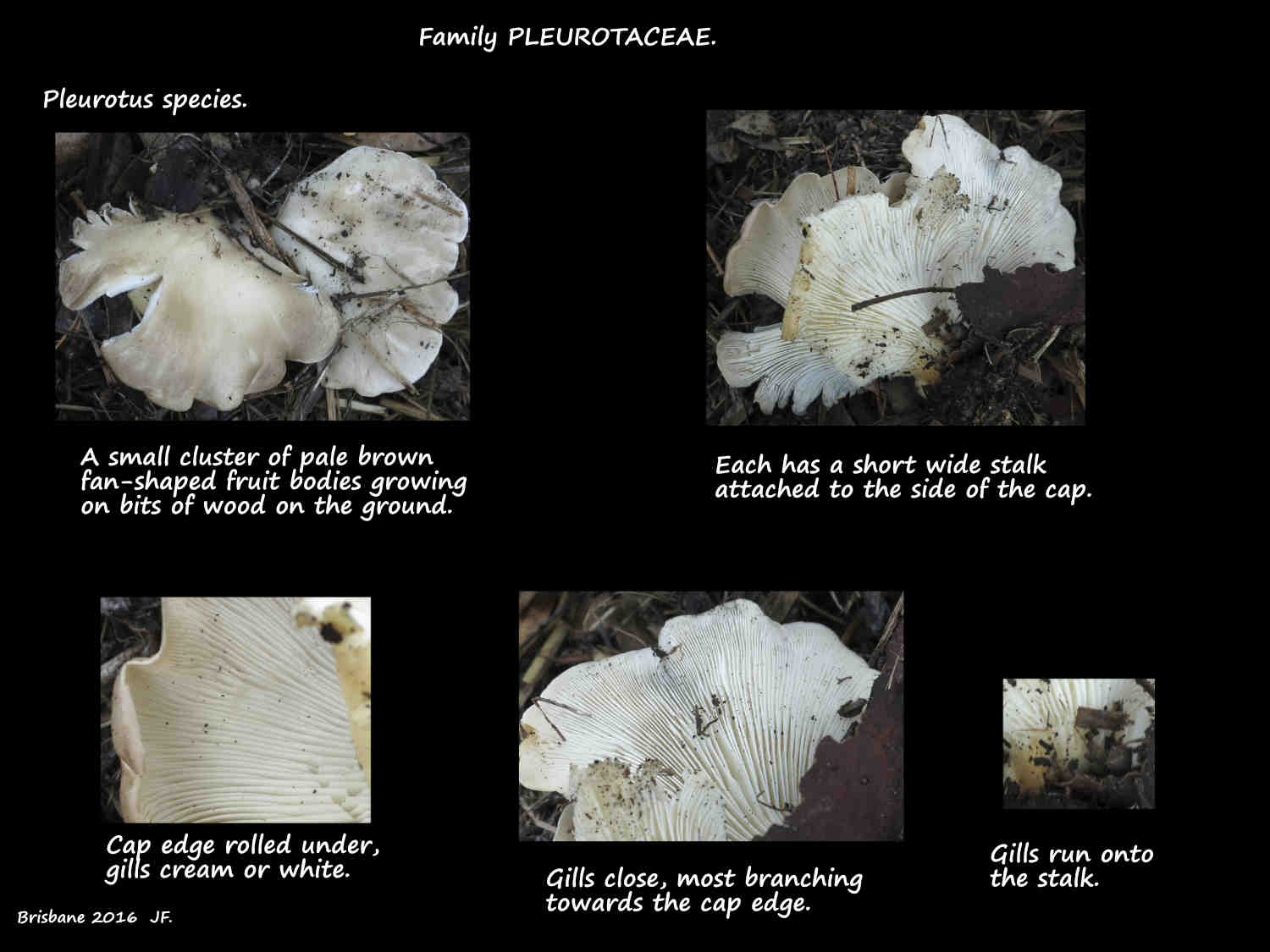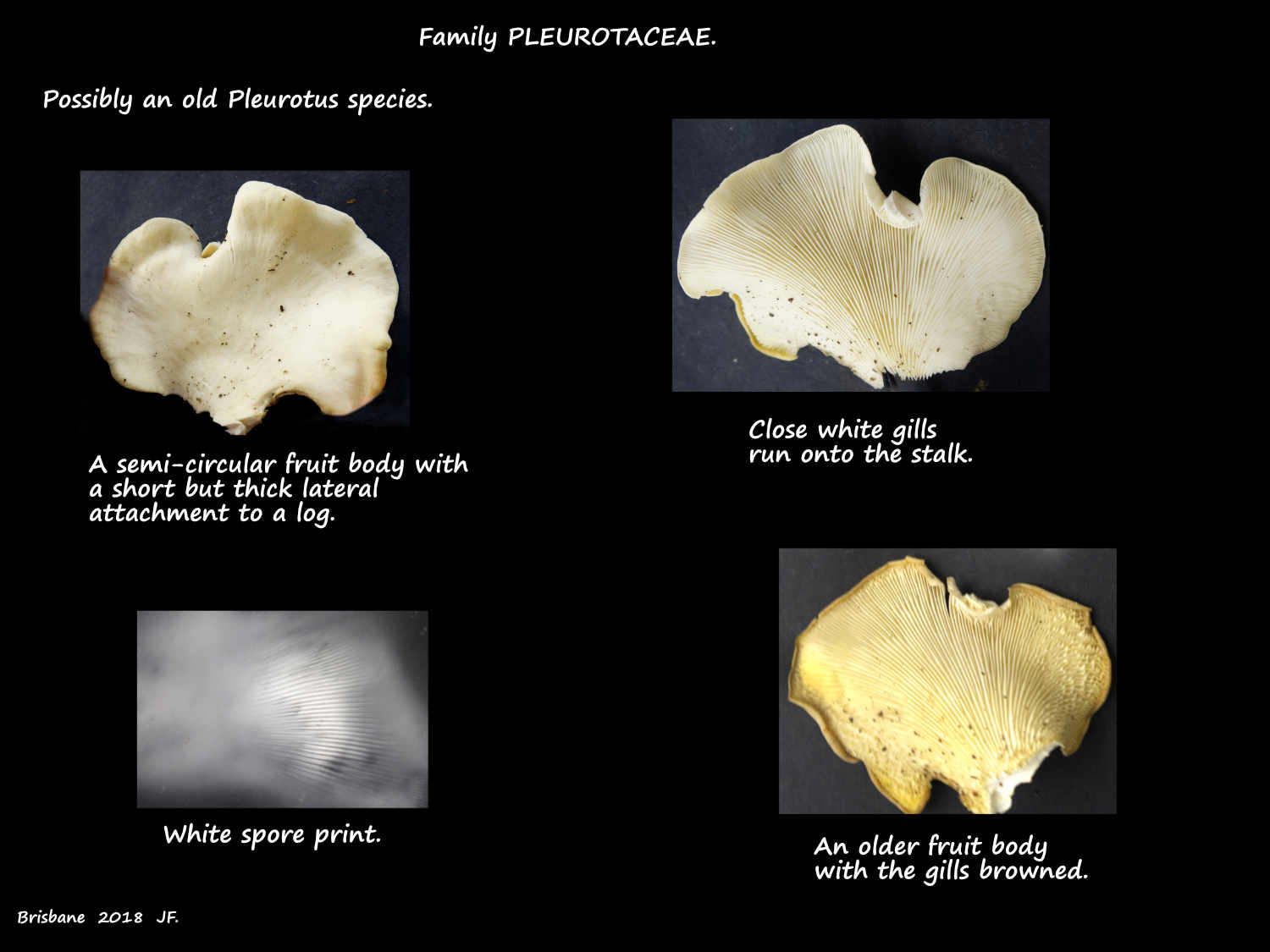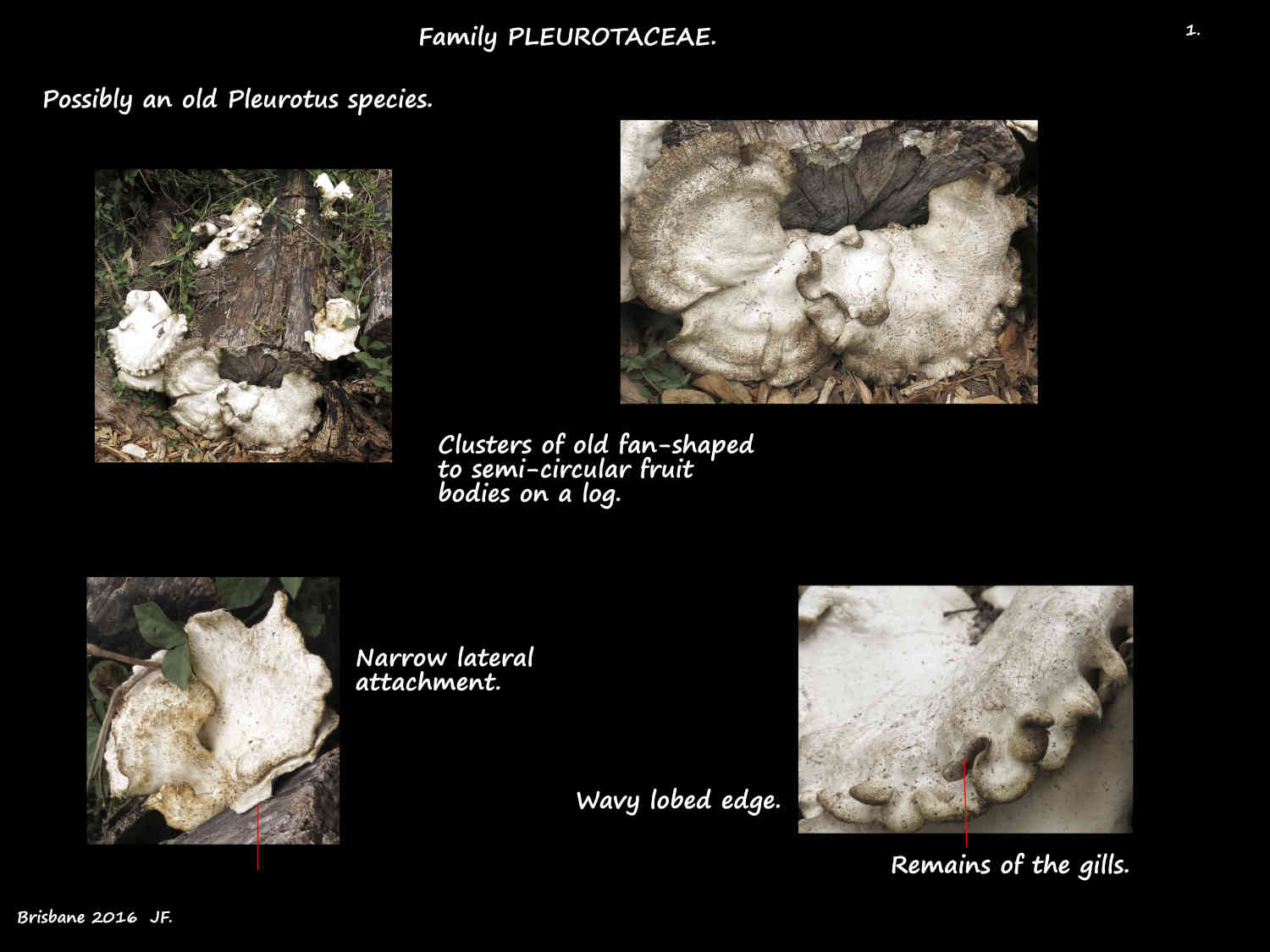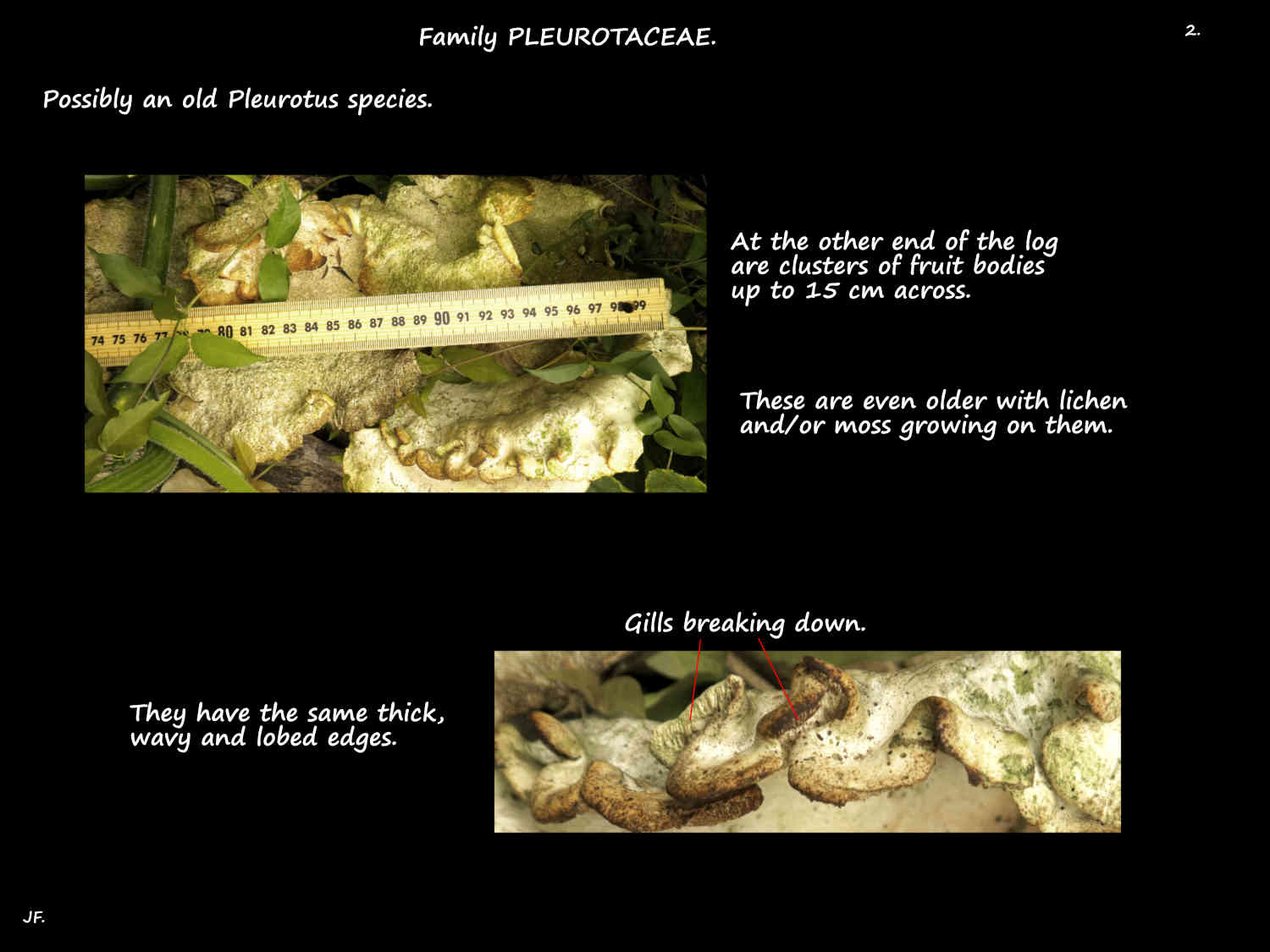Pleurotus.
Fungi > Division Basidiomycota > Class Agaricomycetes > Order Agaricales > Family Pleurotaceae.
The list of synonyms is long and includes many in the Pleurotus and Agaricus genera, some under Lentinus and Panus and a few under Armillaria, Acanthocystis and Nothopanus.
(https://id.biodiversity.org.au/tree/60155597/6009488)
There have been many classifications of the family over the years with the number of genera and species varying greatly.
Difficulties include the widespread nature of the species and their variability.
Many species are difficult to distinguish and there are many synonyms.
With the introduction of genetic studies a lot of the species have been moved to other genera such as Lentinus, Omphalotus and Panellus.
A recent classification has them divided into groups or clades each with sub-groups.
The well known Oyster mushroom P. ostreatus and the King oyster mushroom P. eryngii are in the Pleurotis ostreatus clade which also includes P. pulmonarius which is found in Australia.
The Pleutotus cystidiosus clade has 4 Australian species – P. tuber-regium the King tuber mushroom, P. australis the Brown oyster mushroom, P. australis and P. purpureo-olivaceus.
**********
Mushrooms in the Pleurotus genus grow on wood where most cause white rot.
Many are edible and sold as Oyster mushrooms.
The fruiting bodies can be solitary but most are found in clusters or tiers.
They can resemble a bracket fungus but virtually all have soft fruiting bodies (except when very old).
They are typically a narrow fan-shape up to a full semi-circle.
Sizes range from a few cms across up to 30 cm.
Most have a wide or narrow attachment along their flat side.
Some have a short stalk that can be attached anywhere from the edge to the centre of the cap.
Initially convex caps become flatter with age and develop a central depression near their point of attachment.
The edges are smooth, lobed or wavy and the smooth surface may have some hairs.
Caps are cream, pale to dark brown, grey-brown or have an olive or lilac tint.
Any short stalk is solid, smooth and has no rings on it.
When there is a stalk the gills run down onto it.
Basidia cells on the gills produce masses of white spores.
JF.





